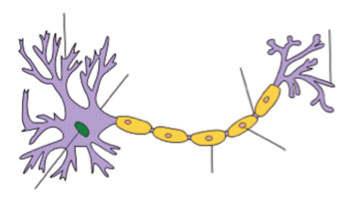Protein That Causes Damage in Early Brain Development Linked to Schizophrenia
By LabMedica International staff writers
Posted on 02 Dec 2014
Overexpression of a protein encoded by a susceptibility gene for schizophrenia was found to cause defective cortical patterning, which results in pathological structural changes in the developing brain.Posted on 02 Dec 2014
The role of nitric oxide synthase 1 adaptor protein (NOS1AP) in the development of schizophrenia was studied in a rat model by investigators at Rutgers University (New Brunswick, NJ, USA). NOS1AP is cytosolic protein that binds to the signaling molecule, neuronal nitric oxide synthase (nNOS). This protein has a C-terminal PDZ-binding domain that mediates interactions with nNOS and an N-terminal phosphotyrosine binding (PTB) domain that binds to the small monomeric G protein, Dexras1. Studies have shown that this protein functions as an adapter protein linking nNOS to specific targets, such as Dexras1 and the synapsins.

Image: Structure of a typical neuron dendrite (Photo courtesy of Wikimedia Commons).
Working with a rat model, the investigators knocked down or co-overexpressed NOS1AP and a GFP (green fluorescent protein) or TagRFP (red fluorescent protein) reporter in neuronal progenitor cells of the embryonic rat neocortex using an utero electroporation technique. They analyzed sections of cortex (ventricular zone, intermediate zone, and cortical plate containing GFP or TagRFP positive cells and counted the percentage of positive cells that migrated to each region from at least three rats for each condition.
Results published in the October 29, 2014, online edition of the journal Biological Psychiatry revealed that NOS1AP overexpression disrupted neuronal migration, resulting in increased cells in the intermediate zone and fewer cells in the cortical plate. An overabundance of NOS1AP also inhibited the process of dendritogenesis, neuronal growth during early brain development that is crucial to creating appropriate neural network structures necessary for all brain functions. In contrast, results from rats where NOS1AP production was "knocked down" showed increased neuronal migration, with more cells reaching the cortical plate.
"When the brain develops, it sets up a system of the right type of connectivity to make sure that communication can occur," said senior author Dr. Bonnie Firestein, professor of cell biology and neuroscience at Rutgers University. "What we saw here was that the nerve cells did not move to the correct locations and did not have dendrites that branch out to make the connections that were needed. The next step would be to let the disease develop in the laboratory and try to treat the over expression of the protein with an antipsychotic therapy to see if it works."
Related Links:
Rutgers University













